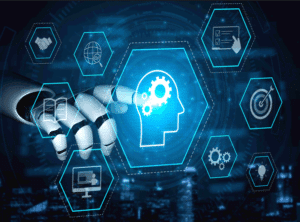AI in Competency Management
Artificial intelligence can dramatically reduce the effort needed to build and maintain competency frameworks — but it’s not a substitute for professional judgement. Used carefully, AI accelerates the analysis of role descriptions, drafts competency statements, clusters indicators, and generates assessment items.
Yet it struggles to interpret qualifications, experience, and other aspects of capability that require verified evidence and contextual understanding.
This guide explains where automation adds value, where human validation is essential, and why transparent governance is critical. It also shows how organisations can combine AI speed with expert oversight to build competency systems that remain accurate, auditable, and compliant.
Where AI Works Well
AI can accelerate many aspects of competency management that rely on language pattern recognition and classification. It performs well in analysing job descriptions, clustering similar roles, and suggesting draft competency statements based on common phrasing. Large language models can also group indicators that describe comparable behaviours, helping to identify overlaps and gaps in existing frameworks.
AI tools are particularly efficient at producing first-pass learning assessments such as multiple-choice questions from training content, or generating draft feedback themes from 360° comment data. These tasks benefit from AI’s speed and its ability to process large volumes of unstructured text.
Used properly, AI reduces administrative effort and creates a stronger starting point for human review. It allows subject-matter experts to spend their time refining language, weighting competencies, and ensuring relevance to the organisation’s unique operating environment.
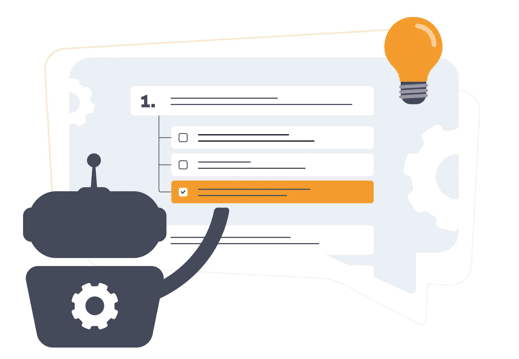

Where Human Review Is Essential
Competency data must be valid, measurable, and context-specific — qualities that AI alone cannot guarantee. Human review is required to confirm that each generated competency truly reflects what success looks like in the role and aligns with organisational risk, compliance, and culture.
Experts must evaluate whether the AI’s language is observable and testable, adjust proficiency levels, and determine the evidence required for assessment. Human calibration ensures that rating scales remain consistent across departments and that learning and performance outcomes stay connected.
AI can surface possible structures, but it cannot judge the significance of a competency to safety, quality, or leadership expectations. Final authority must always rest with qualified reviewers who understand both the technical and behavioural dimensions of performance.
Why AI Struggles with Capability and Qualifications
AI models interpret textual patterns more readily than formal credentials. Job descriptions mention skills and tasks explicitly, but qualifications and experience are often expressed inconsistently — “BEng,” “Bachelor of Engineering,” or “Engineering Degree” all describe the same attribute. Without access to structured qualification databases or standard taxonomies, AI may treat each as different.
More critically, qualifications rarely describe the competencies they represent. Completing a degree or certification does not automatically confirm workplace capability, recency, or regulatory recognition. AI cannot verify expiry dates, accreditation bodies, or practical equivalence.
For this reason, capability mapping — which includes education, training, and verified experience — still depends on human validation and integration with authoritative data sources. AI can assist by suggesting likely capability areas, but final confirmation requires governance controls and evidence records within the competency management system.
Governance and Ethical Use
Introducing AI into competency processes demands clear governance to maintain fairness and transparency. Organisations should define exactly which functions may use AI and under what oversight. Every generated output — from model drafts to suggested indicators — needs documented human approval and traceability.
Key governance practices include bias testing, recording data provenance, and version control for AI-generated content. Staff should understand how AI suggestions are used, and have the right to challenge or amend them. Transparency builds trust and helps auditors verify that decisions are evidence-based, not algorithm-driven.
Ethical frameworks should cover privacy, data retention, and use of personal feedback or performance text in model training. The guiding principle: AI supports decision-making, it does not replace accountability for the decisions made.
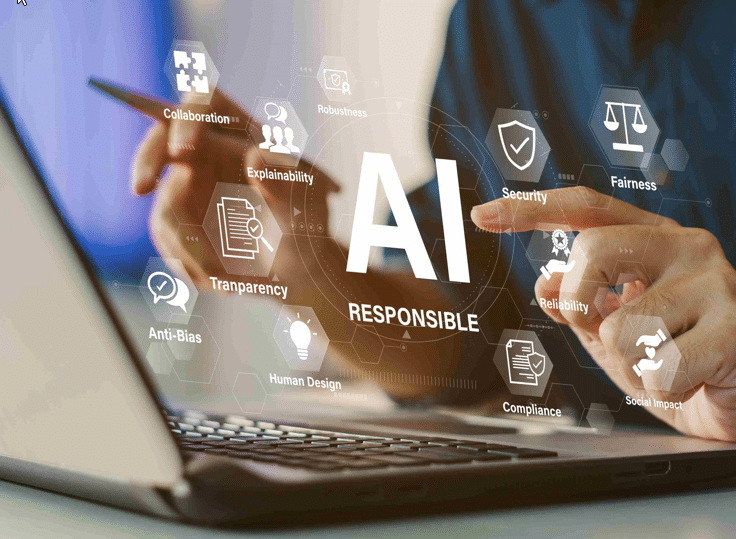
Limitations of AI in Competency and Skills Management
While AI can assist in analysing job data, drafting competencies, and clustering skills, it also introduces significant limitations.
Understanding these constraints is essential to ensure that automation supports—rather than undermines—the integrity and fairness of competency management.
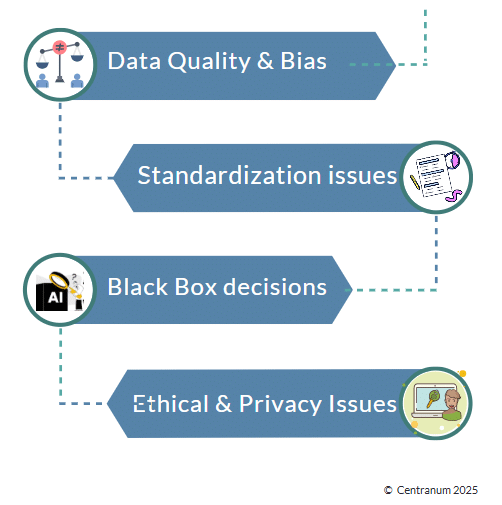
Data Quality and Bias
AI systems are only as good as the data they are trained on.
If training data is incomplete, outdated, or inconsistent, the resulting recommendations will be flawed — garbage in, garbage out.
Bias is another major risk. Historical hiring and promotion data often reflect systemic bias, and AI trained on such datasets will perpetuate those patterns.
This can result in inaccurate competency recommendations, skewed development suggestions, or inequitable performance assessments.
Over-reliance on self-reported skills compounds the problem. Many AI-driven tools depend on unverified input from staff or candidates, which can exaggerate or misrepresent actual proficiency.
Because large language models rely on word frequency and syntactic patterns, they tend to favour common roles and training data over rare or emerging specialisations.
For example, competencies for frequently advertised roles may be accurate, while those for niche engineering or clinical roles are far less so.
AI also lacks contextual awareness. It cannot reliably evaluate soft skills, leadership potential, or emotional intelligence — factors often central to job success.
Standardization and Interoperability Issues
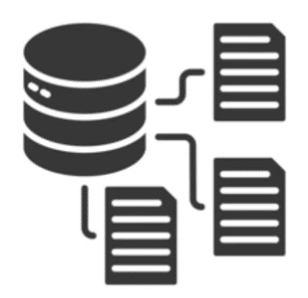
Different tools use different ontologies, naming conventions, and proficiency scales, which can create mismatches when integrating AI outputs with existing HR, Learning, or Competency Management Systems.
Without standardization, inferred skills or competencies may not align with an organisation’s framework or compliance requirements, creating confusion rather than clarity.
Black Box Decision-Making and Lack of Transparency
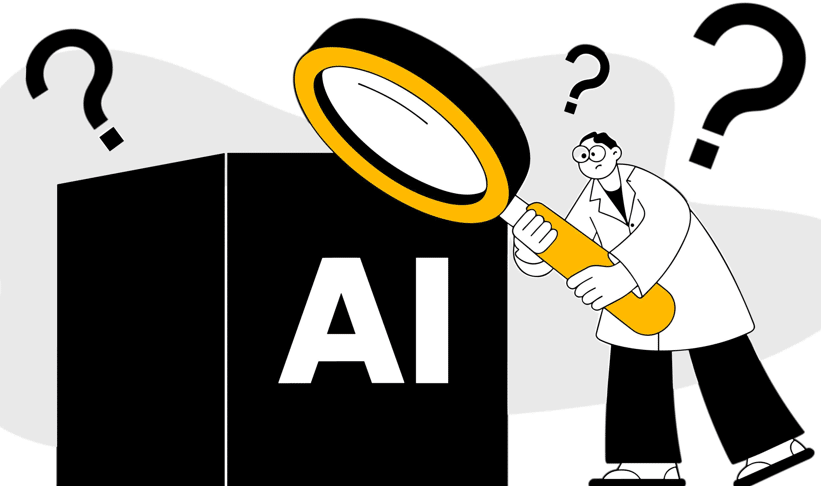
This opacity creates risks in regulated or high-stakes environments where auditability is essential.
When organisations cannot explain AI-driven decisions about hiring, training, or promotion, both compliance and trust are undermined.
Transparent documentation of model use, validation methods, and human oversight is therefore critical.
Ethical and Privacy Concerns

Employees rarely consent to their everyday communication being repurposed for performance or capability evaluation.
Extending inference to social media profiles or external data sources deepens these issues, introducing reputational and legal risk.
Lack of transparency about what data is used and how it is interpreted can erode trust and discourage adoption.
AI systems in people management must therefore follow strict data minimisation, consent, and purpose limitation principles.
Summary
AI offers significant potential to improve efficiency and insight in competency management — but its limitations must be clearly understood.
Without careful governance, validated data, and human interpretation, AI risks amplifying bias, breaching privacy, and eroding confidence in capability systems.
Organisations should treat AI outputs as decision support, not decision authority — combining automation with expert review to ensure fairness, accuracy, and accountability.
Evidence & Audit
Competency management must produce verifiable evidence of capability. When AI tools are involved, auditability becomes even more important. Every AI-generated or assisted element — whether a draft competency, a grouped indicator, or a quiz item — should carry metadata showing when it was created, by which model or tool, and who validated it.
Audit trails should record human changes and approvals, enabling organisations to trace how a competency or assessment evolved. In regulated sectors, this record may be required to demonstrate compliance with professional or safety standards.
Linking AI outputs to performance evidence — such as observation records, test results, or verified qualifications — ensures that competency data remains defensible. Maintaining this linkage turns AI from a black box into a transparent aid that strengthens the integrity of the organisation’s capability framework.

AI will keep reshaping how organisations define and assess competence, but it will never replace the human expertise required to interpret evidence and ensure fairness. A governed, transparent approach lets you use automation where it works best — and rely on validated capability data where accuracy and trust matter most.
Next Steps
- Explore Workforce Capability and Competency Management Software – how capability, competency, skills and knowledge combine to drive performance
- Explore Competency Management Software – see how automation and human oversight combine in practice.
- Read Building a Skills-Based Workforce – apply AI insights to workforce decisions.
- Return to the Capability & Competency Resources Hub
FAQs
Where does AI add value in competency management?
AI can speed up drafting competency statements, clustering indicators, and generating assessment items while human experts verify accuracy.
Why can’t AI infer qualifications or capability reliably?
Job data on qualifications is inconsistent and lacks verification; AI needs structured sources and human review to map formal capability accurately.
What governance is needed for AI-generated competency data?
Apply human review, bias checks, version control and audit trails to ensure fairness, accuracy and accountability.
Can AI fully replace assessors?
No. AI supports analysis but competence and capability judgments require human evaluation and contextual knowledge.

